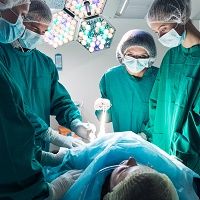Article
Vein Grafts: The Storage Question
Author(s):
Surgeons perform approximately 800,000 coronary artery bypass grafting (CABG) surgeries globally each year.

Surgeons perform approximately 800,000 coronary artery bypass grafting (CABG) surgeries globally each year.
The body of research supporting CABG is extensive, as every CABG procedure requires at least one graft, and many require more. Surgeons usually use vein grafts; they prepare veins with clips or ligations, flush them and store them for at least for a short period before they construct the anastomosis.
Researchers have investigated many aspects of vein grafts in recent years, searching for optimal harvesting techniques. The journal Interactive Cardiovascular and Thoracic Surgery has published a review of a specific concern in vein graft: storage solutions used to preserve vein grafts.
The authors reminded readers that the endothelium plays a key role in long-term patency of vein grafts. Different storage solutions have different effects on the endothelium, although it’s not clear precisely what those differences are, so their goal was to stratify specific solutions as superior, harmless, damaging or ineffective.
The authors found only 20 specific papers addressing storage solutions.
Most surgeons use saline or autologous whole blood (AWB). The authors report that AWB seems to have a clear benefit over saline on the endothelium, although AWB loses its protective properties once outside the circulatory system.
The studies reviewed found that saline had devastating effects on the endothelium, although not all studies reported this result — buffered saline solutions decreased the level of injury and balanced buffered solutions maintained physiological functions.
Since there are no studies currently underway comparing AWB and saline, the information included is historic data from past studies.
Nonetheless, medical manufacturers are developing new solutions, including University of Wisconsin solution, GALA™, TiProtec™ or DuraGraft®. The initial study indicated they have promise, but considerable research is needed to bring these solutions into routine clinical use.
Eventually, the authors expect that surgeons will use custom-made storage solutions, but this process is in its infancy, and will of course need to be studied carefully.


